How to Take Flower Photos in Your Local Garden
Share the article:
More Photo Tips | Video Gallery | Photo Gallery | Enewsletter sign-up
Of all the different photography genres, few transport the viewer into new, unseen worlds quite like macro. Macro photography reveals intricate details of subjects that you may miss with our naked eyes.
Photographers find closeup flower photography captivating because of their inherent beauty and diversity. With a multitude of shapes, colors, and textures, flowers offer many opportunities for creative compositions. As they bloom and wilt throughout the year, flowers provide photographers with a constantly evolving subject to capture.
We can find flowers in local gardens, wild landscapes, and in our own backyards. This makes them accessible for photographers of all levels. Photographers can explore their creativity with flowers.
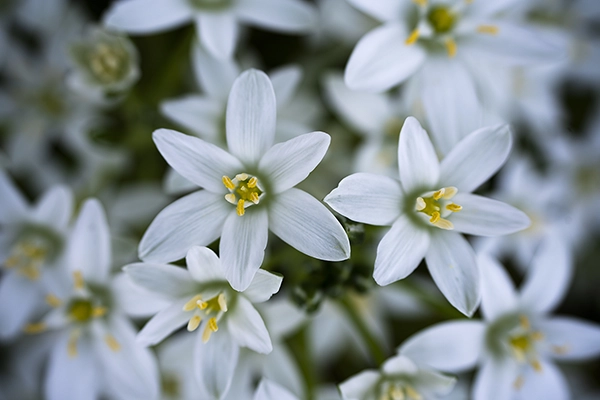
© Andre Costantini
Click image to view larger
You can photograph flowers in many ways, including natural light, reflective lighting, macro photography, or abstract compositions. They offer endless opportunities for artistic expression.
Here are some simple steps to get you started with macro flower photography.
Lighting
The best time for flower photography is early morning or late afternoon when the light is softer and more flattering. Whenever possible, rely on natural light instead of flash. Soft, diffused light works best for capturing the details of flowers.
When flowers are backlit by the sun, you can create dreamy images as the flower seems to glow from the light behind it. Backlight can help your subject stand out from a darker background. You should expose for the brightest part of the flower.
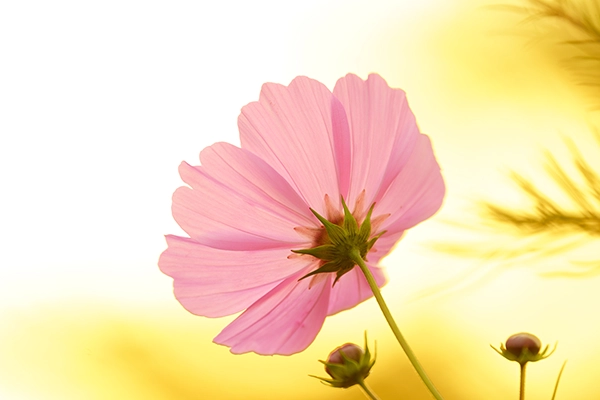
Click image to view larger
Lens flare adds nice element to an image and can add warm complementary colors to contrast with green grass blades or leaves.
If your flower is not well-lit by natural light, use a small collapsible reflector to bounce light onto the flower. This technique helps illuminate the flower evenly and enhances the details in your photograph. You can also use the reflector to bounce light to reduce harsh shadows. Or, change your position and find a different bloom that is not in direct sunlight to create a softer, less contrasty image.
Follow dappled tree light and you will likely find a new subject to capture waiting center stage. Scan the scene to find a spot of open light in the garden.
In the early morning, you will find there is less wind. Flower photography can be much more difficult if your subjects are blowing over in the breeze.
Check the Weather
You can still shoot flower photos on an overcast day to reduce contrast and add detail to the flowers. Rainy days are also an ideal time to shoot macro flower images. You will get water drops in your image that can bring an exciting new look to a flower.
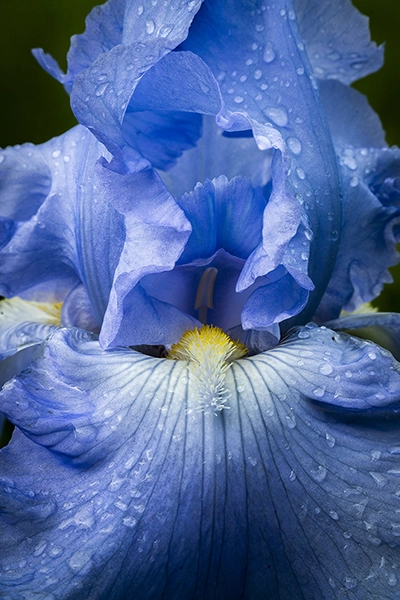
© Andre Costantini
Click image to view larger
On sunny days, waiting for the sun to go behind the clouds will make for better photos. You can also use a polarizer to maximize the reflection and reduce glare. You will also produce a more saturated image.
Camera Settings
Handholding your camera is difficult when you are shooting at a shutter speed less than the focal length of the lens. For example, if you are shooting at 100mm, your shutter speed must be at least 1/100th sec to avoid blurriness from camera shake. Use a tripod if you cannot reach a short speed required for your lens. Use a low ISO for the best image quality.
Play with Depth of Field
Experiment with the aperture on your lens to create the image you envision. Using a wide aperture creates shallow depth of field, blurring the background and making the flower stand out.
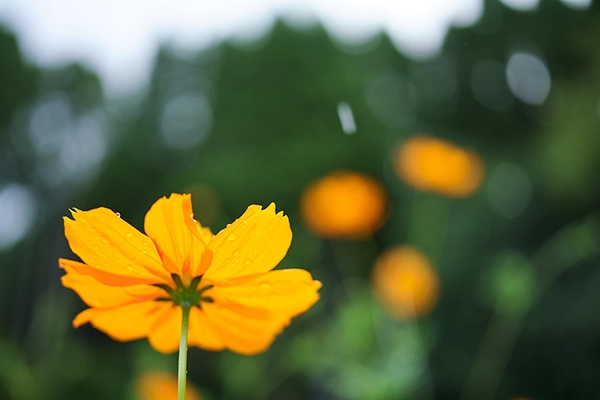
© Takashi Namiki
Click image to view larger
Shallow depth of field occurs when you use a telephoto focal length and the focus distance is close to your subject. However, evaluate your image on the LCD screen to be sure enough of your flower is in focus. You may wish to stop down to F8 or F11 to ensure your flower is in sharp focus. Since you will be shooting close to the flower, the background should drop out enough to make the flower stand out even when stopped down.
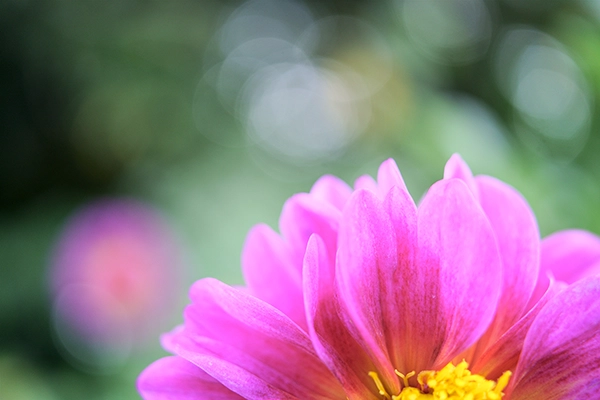
© Takashi Namiki
Click image to view larger
If your background is simple, like a clear blue sky or green grass, you can stop down your aperture since you will not need to blur the background as much.
Composition
Consider how you want to frame your image. Experiment with different angles, such as shooting from above or getting down to the flower's level. You can move underneath a flower or shoot from above it or approach it from the side.
Lay on the ground when photographing flowers. This new perspective may open your eyes to new shots. Lay on your back to photograph low hanging flowers that are facing the ground. You may find unique light created by the sun coming through the plant.
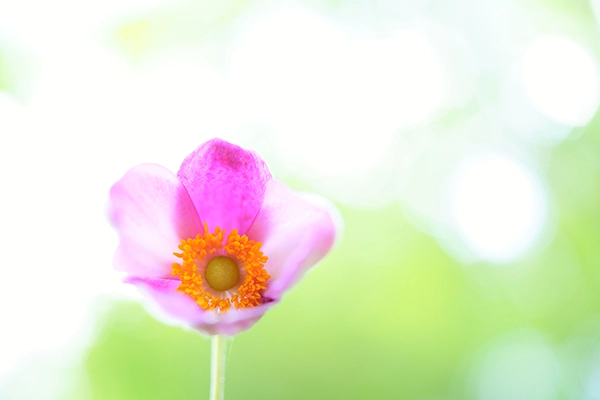
© Takashi Namiki
Click image to view larger
You cannot get too close for a macro subject. You can cut off petals in the frame or leave parts of the flower out. Eliminate excess from the image to focus attention on the main subject. Fill your frame to your eye into the image even more.
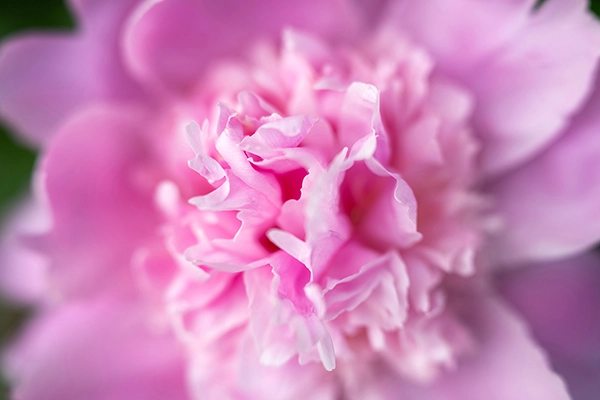
© Ian Plant
Click image to view larger
Pay attention to the background to ensure it complements your subject since it plays an important role in successful flower photography.
If the background is too distracting, place a piece of black or grey foam core behind the flower to create a better background. This helps draw attention to the flower and ensures that it remains the focal point of your photograph.
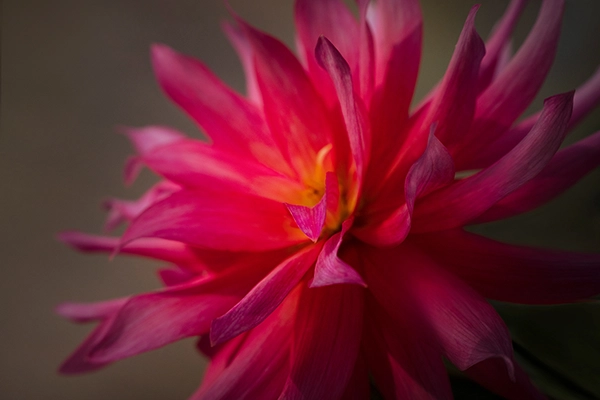
© Lisa Langell
Click image to view larger
Experiment with compositions that are not just centered, and don’t be afraid to mix those compositions up. For instance, there’s nothing wrong with center compositions, but if that’s all you ever do, your portfolio will begin to feel static.
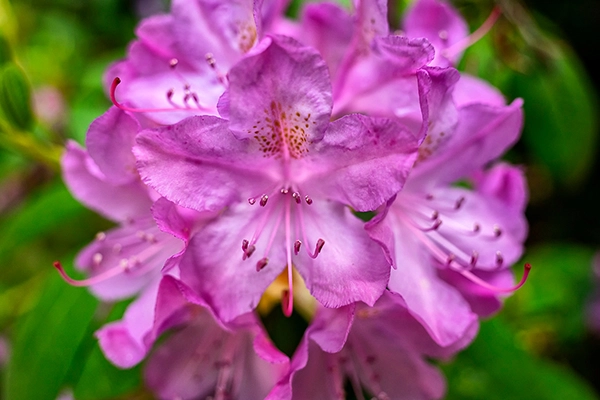
© Ken Hubbard
Click image to view larger
Move your subject around the frame to find interesting compositions. Use the grid on your camera to pinpoint the power points in your composition. Moving around your subject will also help you to find the right light in addition to exciting compositions.
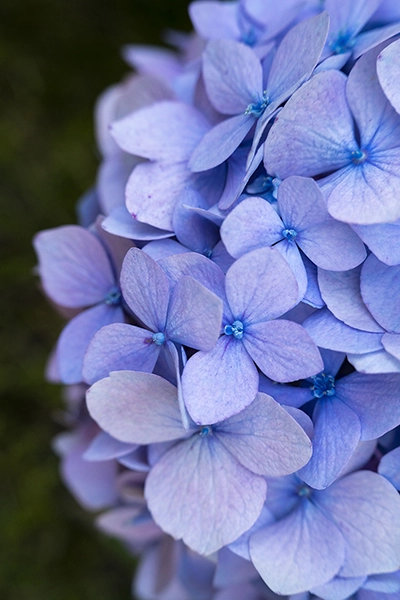
© Andre Costantini
Click image to view larger
Power points are where the grid line intersect. But you can also position your flower in any of the spaces in the grid for pleasing compositions.
Most photographers are content with capturing from a distance. You can create more dynamic images by moving into the space you want to capture and getting in closer.
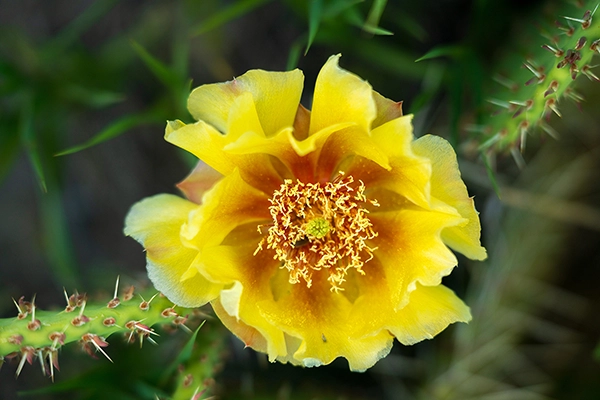
© Ian Plant
Click image to view larger
Spend Time with One Flower
You can create many different types of images with just one subject. Consider photographing one flower for 30-minutes. Shoot it from various angles, fill the frame with a portion of the flower, or pull back to capture the entire plant.
Abstract Flower Images
Abstract macro photography can sometimes appear chaotic. When filling the frame with one subject, look for pleasing patterns for your eye to focus on. Adding layers makes the image more interesting and lets the viewer explore different parts of it.
The xylem, or veins, running through a petal or leaf are intriguing. You’re seeing the inner workings of how a flower stays hydrated. Look for where the light is coming from and move to a position so that the flower is backlit.
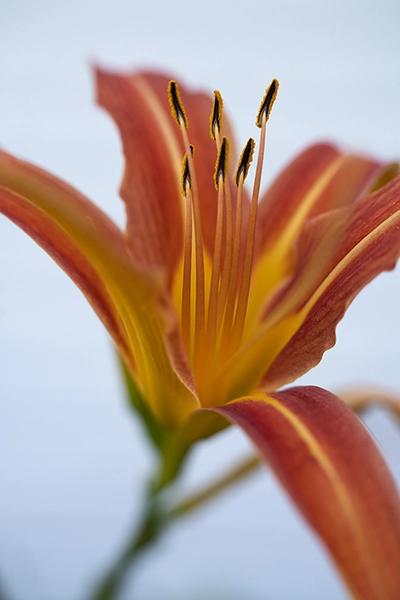
© Andre Costantini
Click image to view larger
Those details will become the most compelling part of the photo. Focus on one small portion the petal or leaf. Letting the rest of the image softly drop off provides a more abstract style.
Equipment
• Use a tripod to avoid blurry photos, especially in low light conditions or when using slower shutter speeds.
• Bring a spray bottle with you when you photograph flowers to add water drops to your images. Water drops on flowers add a compelling visual element to your garden photos. This method lets you carefully control the volume and placement of the water drops.
• Use macro lenses or lenses with a macro feature such as 1:1, 1:2. Macro is any maximum magnification ratio of 1:4 or better.
Using a macro or close-up lens can help you capture the small details of a flower. This includes the texture of the petals and the patterns of the stamen. Tamron lenses have excellent close-up capabilities. Some of the lenses feature 1:2 macro and excellent minimum focusing distances. These features are perfect for taking pictures of flowers.
o Tamron 50-400mm F/4.5-6.7 Di III VC VXD for Sony E-mount mirrorless cameras. This lens has the unique feature of 1:2 maximum magnification at 50mm. The focal length range of this lens is ideal for flower photography in a garden or arboretum where you may not be able to get very close to the flowers. Use the lens to zoom in on your preferred bloom for dynamic telephoto images of flowers. The lens features moisture-resistant construction and a 67mm filter size.
o Tamron 18-300mm F/3.5-6.3 Di III-A VC VXD for Sony E and Fujifilm X series APS-C mirrorless cameras. This all-in-one zoom lens offers a remarkable 1:2 macro as well as 16.6X zoom range. With this lens, you can capture beautiful images of multitudes of blooming flowers as well as close-up images. The lens features moisture-resistant construction and a 67mm filter size.
o Tamron 35mm F/2.8 Di III OSD for Sony E-mount mirrorless cameras. This 35mm prime zoom lens has a fast aperture and 1:2 macro capability for a true macro experience. The lens features moisture-resistant construction and a 67mm filter size.
Post Processing
The level of processing is up to personal preference, but it's best to keep flower images looking as natural as possible. Adjust the contrast and tweak the highlights. You may wish to sharpen the image in the areas where you want to show the most detail. Apply clarity to make the photo pop more.
Off Season and Dreary Weather
Don't let bad weather stop you from photographing flowers. You can try photographing flowers indoors if the weather isn't cooperating. Purchase flowers from a local florist and order additional items like feathers, mounted butterflies, and seashells to create artistic compositions. This allows you to continue practicing your photography skills and experimenting with different arrangements, even when the weather outside isn't ideal.
Conclusion
From delicate petals to intricate patterns, the details of flowers provide photographers with captivating close-up shots that showcase the wonders of nature. Macro worlds are waiting for you to capture them, but you must explore to find them. Flower photographers enjoy the beauty of nature while capturing stunning photos of flowers.
Related Articles
TAMRON Magazine Issue 15
TAMRON Magazine Issue 11
TAMRON Magazine Issue 2
Alyce Bender's Tips for Macro with Telephoto Lenses
Close-Up Articles in Tamron eNewsletter Archives
More Photo Tips | Watch Videos | Learn More About Tamron Lenses | Photo Gallery